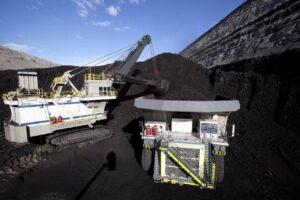I must have done some horrible things in a past existence.
I seem to be condemned to spend much of my life blindsided and forced to respond to reports splashed over the front page of the newspapers predicting economic Armageddon if Australia were to do anything half serious to reduce emissions from our electricity supply.
The problem, of course, is that a lie gets halfway around the world before the truth has a chance to get its pants on. So if you don’t respond quickly to such reports then the mud sticks and usually journalists aren’t much interested in writing up a story several days later saying a prior article was wrong.
We saw this a few weeks ago. Splashed across the front page of The Australian were reports that Australians were facing a $9000 pay cut if Labor were to implement its plan to reduce carbon emissions.
In the days following this a range of people managed to dig into the source of this claim, which came from BAEconomics – headed by the Howard Government’s economic modeller Brian Fisher.
These revealed that his model had some quite puzzling assumptions about the cost of abatement that were well above those from a range of other expert studies of the electricity sector, land use, gas usage, and transport.
His assumptions about the cost of energy storage which the government said came from the Australian Renewable Energy Agency (ARENA), were subsequently disowned by the Agency as too high.
In spite of this, we’ve seen politicians cite this $9000 pay cut claim over and over again in media interviews without much push back.
If you think we can all put this behind us after the election of a Labor Government I’ve got news for you – it will get a whole lot worse.
If Labor are elected at the forthcoming federal election they face a long and treacherous path towards implementing policies to deliver on their 45 per cent emission reduction target.
At present a range of industry groups are all behaving relatively nicely. For the most part they quietly concur that it would be sensible for government to introduce an emissions trading scheme along the lines of the National Energy Guarantee, and another using the framework from the Safeguard Mechanism.
But once we get into the detail expect this to get ugly. It will be a gun fight as industry groups and big emitters fire off bullets from their preferred economic modeller predicting job losses here, power bill increases there, and a cost of living whack all around.
Usually these economic models are privately held and getting your hands on the detail behind the claims of doom and disaster can be tricky. If you want to put their claims to the test or explore how the results might be different with alternative assumptions you need to find yourself tens of thousands of dollars to pay for the privilege.
Don’t get me wrong, economic models can be useful. My own firm, Green Energy Markets, engages in modelling of the energy sector. All of us modellers get our predictions wrong by the way. But the usefulness of these models tends to get lost in the gun smoke of political battle.
So wouldn’t it be great if people who didn’t have access to thousands of dollars to pay economic modellers could still access an economic model of our energy market?
That way we could test these assorted claims in the newspapers. Of course no economic model is perfect and just because one disagrees with another it doesn’t conclusively prove a particular modelling result wrong.
But where there are big differences it might help alert journalists to dig deeper and keep industry associations and their economic modellers more accountable. I
t could help force them to be more transparent about how their model works and detail the evidence for why their results should be deemed more reliable than those from the free model. They might even start to moderate their claims a bit, or potentially acknowledge a broader range of potential outcomes are conceivable.
Thankfully we now have that free and open model which is called openCEM (open Capacity Expansion Model).
Last week an Industry Reference Group, which has been assisting with its development and of which I am a member, was advised that an open Beta version has been released. I encourage everyone interested in the model to use it and provide feedback to the developers, ITP Analytics (ITP). You can access it at: www.openCEM.org.au.
This model is a product of a team involving the energy consulting firm ITP, University of NSW’s Centre for Energy and Environmental Markets, the Climate and Energy College at the University of Melbourne, the software development specialists ThoughtWorks, and the US Strategic Energy Analysis Center of the National Renewable Energy Laboratory (NREL).
Credit is also due to the Australian Renewable Energy Agency and the Governments of NSW, Victoria and South Australia who helped fund the development of the model.
The model has been deliberately designed so that those who don’t spend their lives in spreadsheets and computer code can make use of it. At the same time those that do like to play with computer code are free to get into the innards of the model to alter and improve it.
What’s most important is that this model’s assumptions and how it functions are completely open and transparent. If there’s something someone doesn’t like about the model they are free to change it and explore the implications.
No doubt the media will continue to eagerly publish claims of economic Armageddon flowing from polices to reduce emissions. But the rest of us will be better equipped to respond before those lies get halfway around the world.
Tristan Edis is Director – Analysis & Advisory with Green Energy Markets. Green Energy Markets assists clients make informed investment, trading and policy decisions in the areas of clean energy and carbon abatement.








